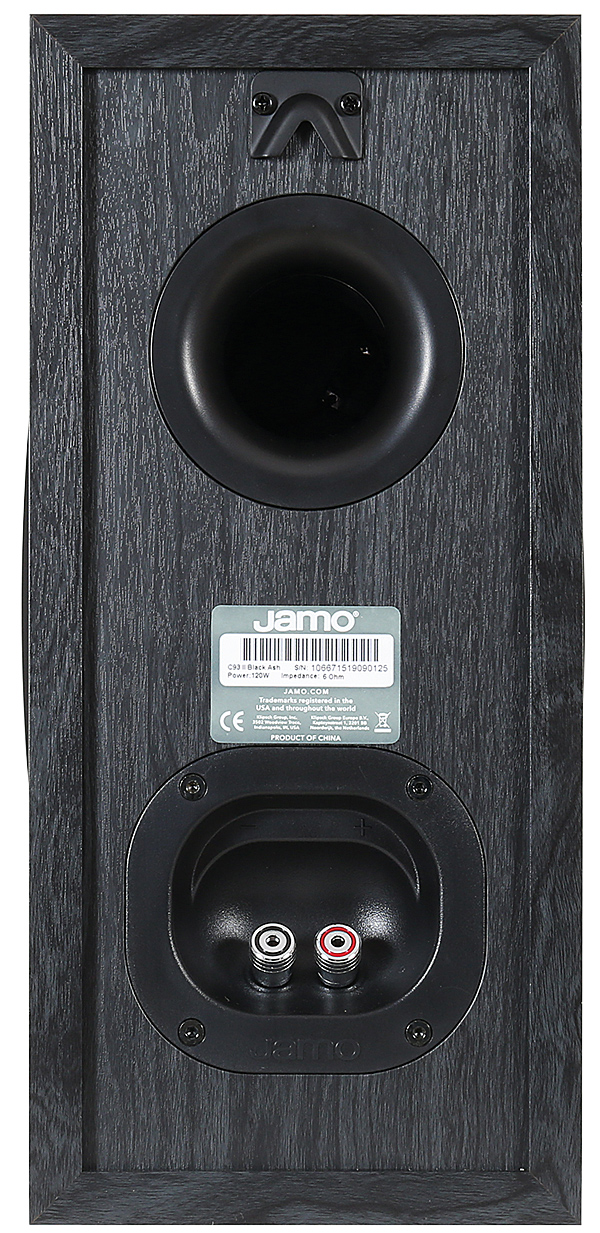Jamo Concert C 93 II Loudspeaker

 The latest compact speaker from Jamo blends designer appeal with solid audio engineering
The latest compact speaker from Jamo blends designer appeal with solid audio engineering
The small speaker market is a fiercely fought arena, with every major speaker brand having at least one dog in the fight, and often several. It's not hard to see why: there's a tradition of speaker companies making over-achieving budget boxes, while the interior design appeal of small enclosures delivering a big sound has encouraged builders to develop the idea of the compact standmount/bookshelf speaker beyond the entry-level. The result is a choice of models with more expensive engineering – and hopefully even better performance – while still keeping the dimensions neat and tidy.
Mod Squad
The loudspeaker we have here, the £425 Jamo C 93 II, isn't quite the smallest model in the company's Concert 9 II series – that honour goes to the C 91 II, which costs £325. Featuring what are described as 'premium, furniture-grade finishes', with natural tweed grilles, the new models are designed to fit in with modern décor, and are part of a six-strong range following the current trend of slimming down lineups to the bare minimum, rather than the old way of launching a dozen or so variants designed to fill every niche in the market.
As for the rest of the range, this comprises two floorstanders – the £700 C 95 II and the C 97 II, at £900, plus a single centre speaker, the C 9 CEN II at £275, and the £475 C 9 SUR II surround speakers. UK distributor Henley Audio has further simplified the choice for buyers, for while Jamo offers the speakers in white with heather grey grilles, and either black ash or dark apple with charcoal grey grilles, Henley has chosen only to take the black, with white available to special order while stocks last on all but the C 9 SUR II.

If the mention of black ash recalls those horrid 'open grain' foil wraps found on everything from cheap flatpack furniture of the past to some speakers of the same era, think again. Things have moved on, and the Jamo speakers are smartly finished, with the main enclosures toning well with the satin-painted front baffles, nicely set off with satin-finished trim rings around the drivers, polished chrome logos on the side of the speakers, and those magnetically-attached grilles. We may not get the full choice of finishes in the UK, but what we do get is very stylish, if a little unusual-looking, Jamo having clearly responded to the high standards of both industrial design and construction now available even at the lowest level of the speaker market.
The C 93 II is a beefy bookshelf speaker – Jamo calls it a 'monitor' – standing 35cm tall. It's equipped with a 25mm tweeter and a 15.25cm mid/bass unit, which is tuned by a single port at the rear, and connected using a single set of terminals. By contrast the entry-level C 91 II is just 26.5cm tall, and uses a smaller 10cm mid/bass driver. The layout looks conventional, but the silk dome tweeter sits in the centre of a large, deep 'Anti-Diffraction Waveguide', designed to control dispersion and enable a high standard of imaging even when one sits away from the 'sweet spot'.
When it comes to the mid/bass drivers, these are also recessed into the baffle, giving a mild horn-loading effect, which again controls their dispersion. The unit itself uses the company's 'Hybrid Composition Conical Cone' technology, designed for a combination of stiffness and self-damping. It's a development of the previous 'Hard Conical Cone' used in the company's previous Concert series and built around a stiff/compliant/stiff sandwich construction. The stiff outer layers maintain the cone shape while the compliant layer aims to damp resonances at higher frequencies. The aluminium centre plug is there to aid the cooling of the 'motor' and also prevent cone break-up.
Easy Drive
The rated 88dB/W/m sensitivity is slightly optimistic but the C 93 II won't present too much of a challenge for modern amplifiers. In fact the only controversial aspect of the design is likely to be the oversized baffle. This is a feature throughout the C 9 II range and certainly gives the speaker a distinctive look, extending out beyond the side panels of the main enclosure and avoiding some of the more obvious effects that arise when baffle meets side panel. Some manufacturers tackle this issue by radiusing the joints between the panels, smoothing them out, but Jamo has chosen to extend the baffle so all it meets at its edges is air.

















































